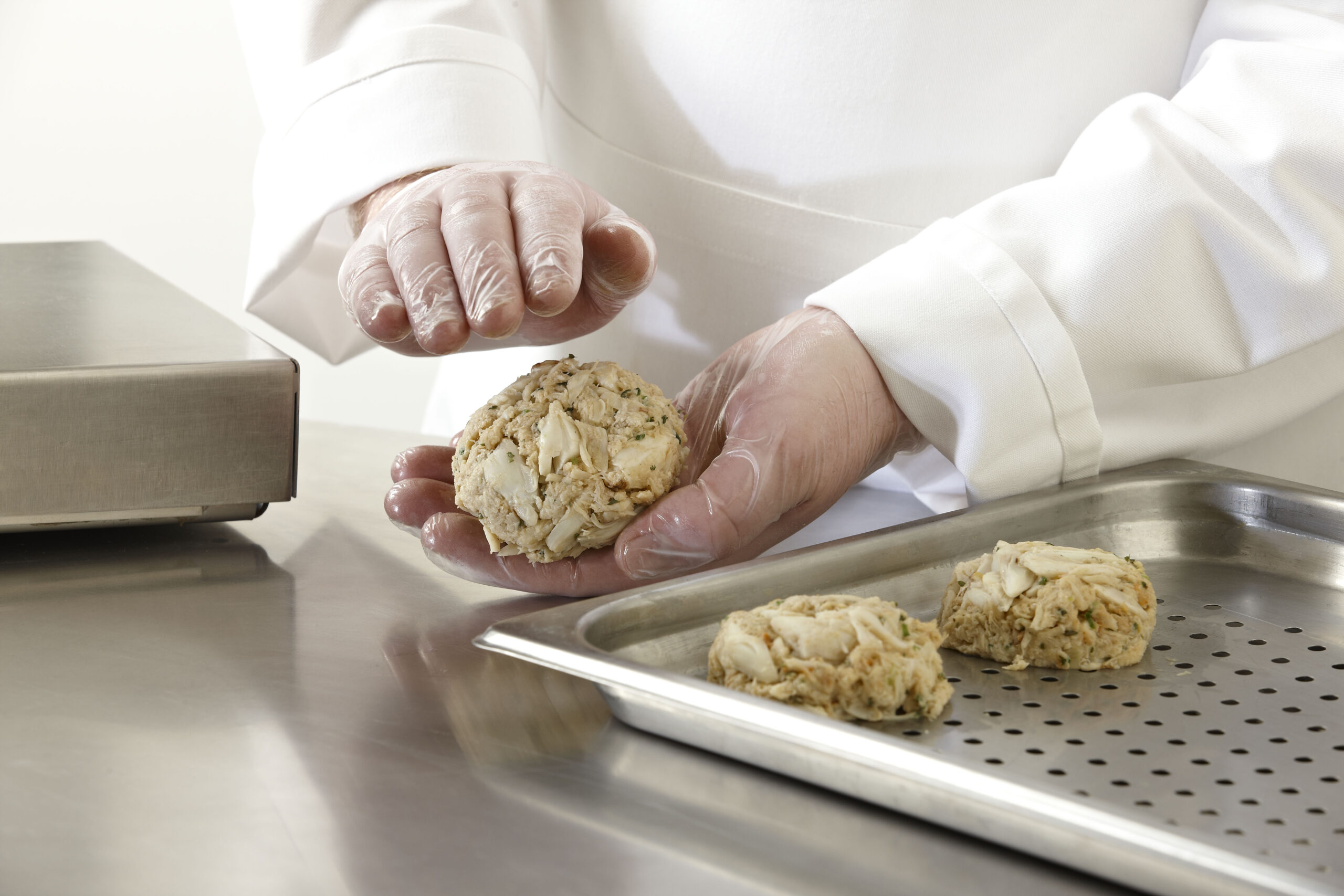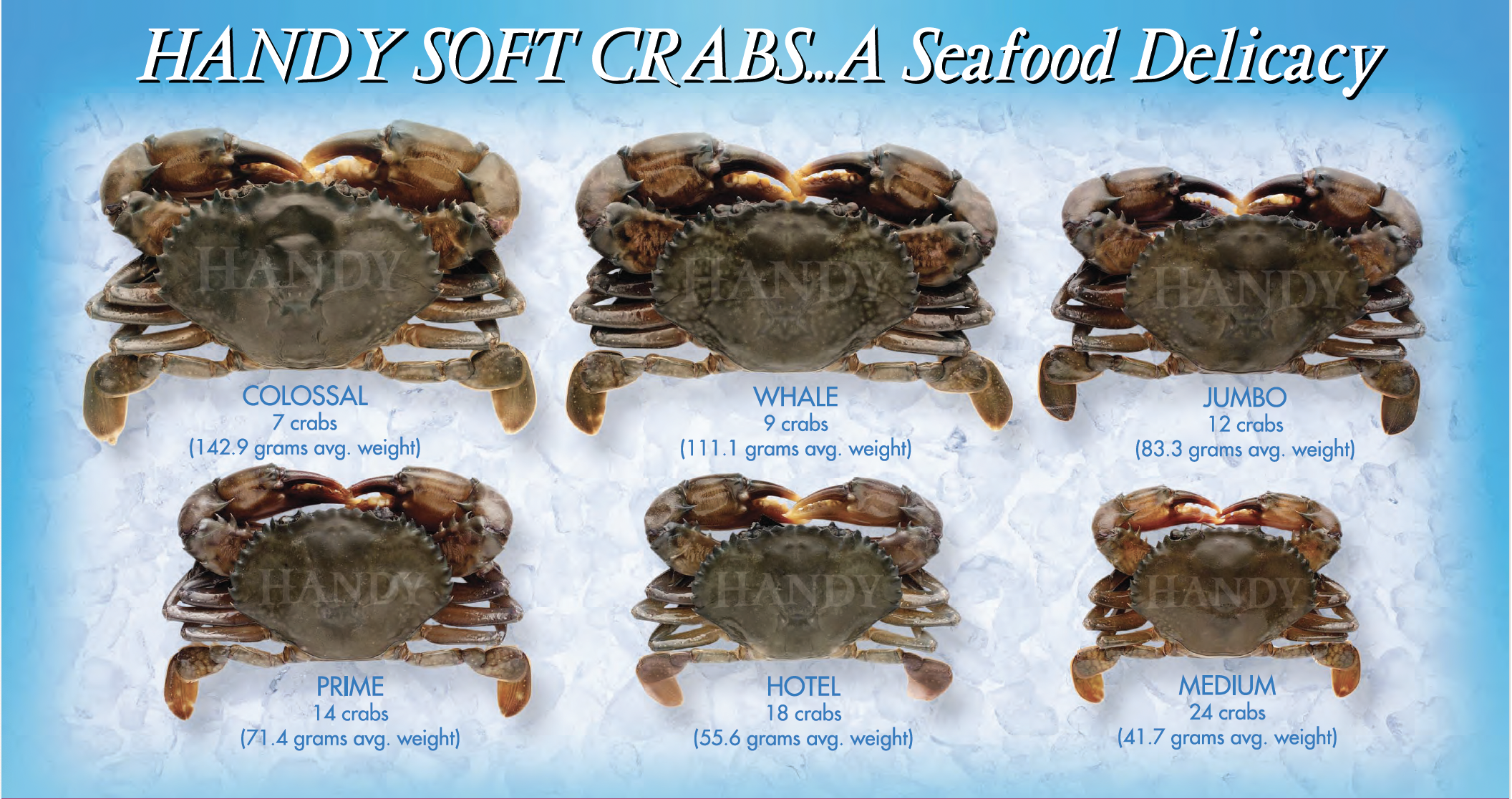Soft Crabs
Soft crabs, or soft-shell crabs, are a culinary delicacy that are not a different species of crab, but rather a stage in a crab’s life cycle. They are crabs that have recently gone through the process of molting—shedding their hard outer shell to grow a new, larger one.
Here’s a breakdown of the process:
- The Molting Process: As a crab grows, its hard exoskeleton does not. To get bigger, the crab must shed its old shell in a process called molting. A new, soft shell forms underneath the old one before the crab breaks out of its old shell.
- The “Soft” Stage: Immediately after molting, the crab’s new shell is soft and pliable. At this point, the crab is very vulnerable and is often harvested.
- The Window of Opportunity: The soft-shell stage is very brief—the new shell begins to harden almost immediately after molting. It can take only a few hours for the new shell to become leathery or hard again. This is why soft crabs are a time-sensitive product.
- Consumption: Because the shell is soft, the entire crab—apart from a few inedible parts like the gills and mouthparts—can be eaten. They are typically deep-fried, sautéed, or pan-seared to give them a crispy texture, and are a popular item in sandwiches, main dishes, and appetizers.
While Handy’s Soft Crabs are fully cleaned and ready to use, here are instructions for cleaning a soft crab.
- Remove the eyes and mouthparts: Cut across the front of the crab, just behind the eyes.
- Remove the gills: Lift the top shell on each side and snip out the feathery gills, which are often beige or tan.
- Remove the apron: Turn the crab over and pull off the small, triangular flap on its underside.
- Frying: The most popular method. The crab is typically dredged in seasoned flour, cornmeal, or a light batter and then pan-fried or deep-fried until golden and crispy.
- Sautéing: Sautéing in butter or oil is another common method that results in a tender, buttery interior and a light crust.
- Grilling: They can also be grilled, often after a light coating of oil and seasoning.
They have a rich, buttery, and sweet flavor, similar to hard-shell crabs. The main difference is the texture. The meat is very tender and juicy, and the entire crab has a slight crunch from the cooked shell, which many find to be a delightful textural contrast.
Yes, the entire crab can be eaten after it has been properly cleaned. This is a key difference from hard-shell crabs, which require tedious picking to get to the meat.
A typical 4-ounce serving of raw, cleaned soft crab is an excellent source of lean protein and essential nutrients.
- High in Protein: A 4-ounce serving can contain around 20 grams of protein, making it an excellent source for muscle repair and growth.
- Low in Calories and Fat: Soft crabs are relatively low in calories (around 95 calories per 4-ounce serving) and very low in fat.
- Rich in Minerals: They contain a number of important minerals, including:
- Calcium: Because the new, soft shell is consumed, soft crabs are a good source of calcium, which is vital for bone and teeth health.
- Phosphorus: Another key mineral for strong bones and teeth, as well as kidney function.
- Selenium: A powerful antioxidant that supports the immune system.
- Zinc and Copper: Essential for various bodily functions, including immune response and iron absorption.
- Contains Omega-3 Fatty Acids: Like other seafood, soft crabs contain omega-3 fatty acids, which are beneficial for heart health, brain function, and reducing inflammation.
Crab Meat
Yes, you can freeze crab meat. To best preserve its texture, it is often recommended to freeze it as part of a prepared dish like crab cakes. Frozen crab meat, on its own, can become mushy.
If you have leftover crab cakes, they can be frozen for later use. It’s generally advised not to refreeze cooked crab cakes that were previously frozen when raw.
Once opened, fresh or pasteurized crab meat should be consumed within 3 to 4 days, or within 48 hours to ensure the best quality.
People are curious about the nutritional benefits, such as it being a good source of protein, Omega-3 fatty acids, and essential vitamins and minerals like B12, selenium, and zinc.
Crab Cakes
Crab cakes are a traditional dish associated with the Chesapeake Bay region of the United States, particularly Maryland.While the exact origin is debated, it is believed they were first created by Native Americans in the Chesapeake region, who would mix picked crab meat with cornmeal and cook it. The recipe was later adopted by settlers.
The term “crab cake” first appeared in print in the 1939 New York World’s Fair Cook Book by Crosby Gaige, where they were referred to as “Baltimore crab cakes.” However, recipes for similar crab patties or fritters existed earlier, with some references dating back to the 19th century.
Jumbo lump crab meat is often considered the best for crab cakes. Handy’s Crab Meat Combo includes 4 grades of crab meat giving crab cakes the best flavor.
A good crab cake has a high ratio of crab meat to filler, and the crab is mixed gently to keep the lumps intact.
Crab cakes are typically made with crab meat, a binder like eggs or mayonnaise, and seasonings like Old Bay, mustard, and Worcestershire sauce.
Different regions have their own styles. For example, traditional Maryland crab cakes emphasize large lumps of crab meat with minimal filler.
Both methods are common. Frying can produce a crispy outside, while baking, air frying or broiling can be a healthier option.
Cooking times vary by method, but they are typically cooked until golden brown
Chilling the patties for 20-30 minutes before cooking can help them maintain their shape.
Crab cakes are often served with sides like French fries, coleslaw, or a simple green salad.
Common sauces include tartar sauce, remoulade, or cocktail sauce.
Yes, crab cakes can be frozen, but it’s often recommended to freeze them uncooked for a better flavor.




